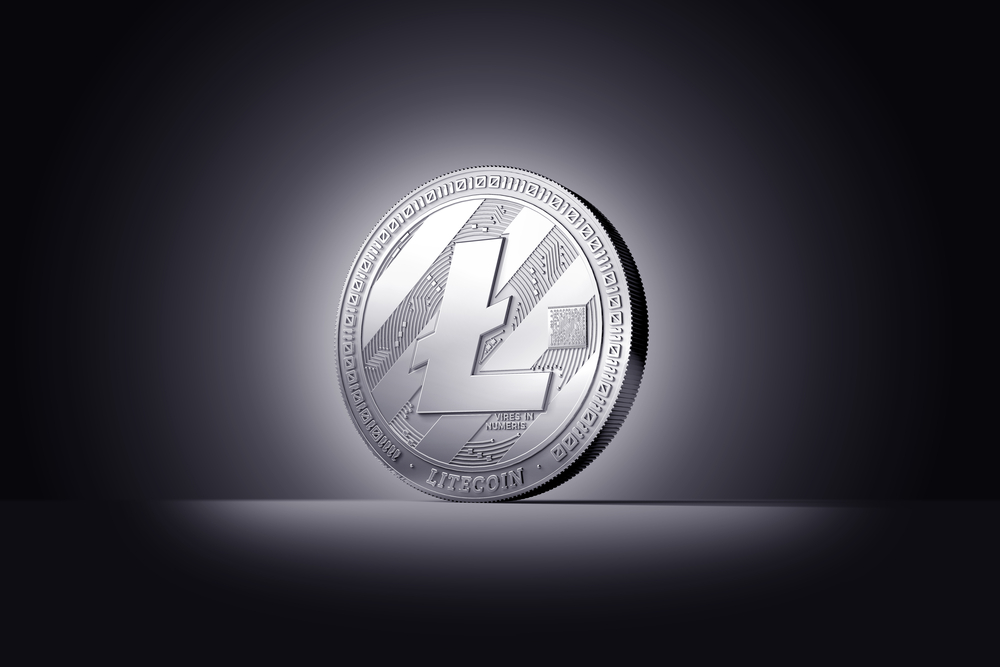2022-10-22 05:01 |
Being methodical about bitcoin loans could lead to exceptional benefits compared to less calculated usage.
This is an opinion editorial by Wilbrrr Wrong, a Bitcoin pleb and economic history enthusiast.
In this article, I describe my experience in using bitcoin-collateralized loans, of the sort offered by Holdhodl or Unchained Capital. I employed these loans during the bull run of 2020-2021, using some general rules of thumb, however recently I've made a study which shows that they could be used with greater safety if a more systematic approach is put in place.
I'll make the caveat at the outset that my practice may well be criticized as failing to “stay humble.” Certainly many pundits would advise against these ideas, for example in this “Once Bitten” episode with Andy Edstrom.
I've had a longstanding interest in the use of modest amounts of leverage in financial strategies, and these ideas are presented solely to document my experience, and how it could have been improved.
MotivationsThe first motivation for this strategy came from the excellent book “When Money Dies,” which details the step-by-step process of how Germany spiraled into hyperinflation in 1920-1923. One striking story from this period is that many Germans became rich, while the currency and country were going through hell. These investors took out deutschmark loans, and used them to buy hard assets like real estate. Then after one to two years, they would pay off their loans with deutschmarks that had become nearly worthless, and they would still be in possession of the real thing — a house, for example.
The second motivation came from thinking about Treasury management strategies. Managing a bitcoin stack seems analogous to the issues that Saudi Arabia faces, with their oil resources. In particular — they have a valuable resource, and they have expenses. They want to use their resources to maximize their purchasing power, and build wealth for the future. Of course, Saudi Arabia has other geopolitical considerations as well, but in general, this is the issue faced by any family office or wealth manager.
Previous ExperienceI used the “deutschmark loan” strategy to good effect in the bull market of 2020-2021, however I was not systematic. I went with subjective judgment for when to take out loans, and how to size them. I had the general guiding principles:
When initiating a new loan, try to keep total portfolio loan-to-value at 20%. In other words, try to keep the USD value of the loan book at 20% of the USD value of the bitcoin that I had allocated to this strategy. In this case, I would be able to withstand a 50% drawdown in BTC price.Try not to sell. I had pretty well drank the Kool-Aid that BTC would reach $200,000-plus, and I didn’t want to get shaken out.All loans were bitcoin collateralized loans, of the sort offered by Hodlhodl or Unchained Capital. A main feature of these loans is that they get liquidated if the bitcoin backing the loans falls in value — essentially a margin loan. For example: if you take out a $50,000 loan, then you need to over-collateralize, and put up $100,000 worth of bitcoin. If the value of the bitcoin falls to $70,000, then you’re required to post additional BTC, or your collateral will be liquidated.
I did reasonably well with these ideas. I survived the Elon/dogecoin drawdown, and held on for the Q4 2021 bull run. But then I held on too long in the 2022 Federal Reserve-induced bear market. Following this experience, I decided to study whether a more systematic approach would have improved downside protection, while also allowing my stack to grow over time.
The Systematic StrategyWith this modified strategy, I conducted a back-test over 2019-2021 which introduced strict guidelines for taking out new loans, and downsizing existing balances. I chose guidelines relatively similar to my 2020 strategy, but with more discipline. I started out with a loan-to-value (LTV) of 20%. For example, with a test BTC stack worth $100,000, then the initial loan would be for $20,000, which would be used to purchase more BTC.
Once the loan is established, then my test monitors whether the BTC price falls. In this case, then LTV rises. Continuing the previous example, if the value of the bitcoin stack falls to $80,000, then LTV rises to 25%. (The loan value of $20k is now divided by the updated $80k value of the stack.)
If LTV rises too high, then the test liquidates some portion of the loan. In my studies, I chose 30% as this level. If LTV hits this level, then it sells some BTC to pay off a portion of the loan. In this approach, I don't want to over-react to momentary swings during a volatile bull market, so I would sell enough bitcoin to bring LTV back down to 25%.
On the opposite side, if the BTC price rises, then LTV will fall. With the previous example: If the bitcoin stack rises to $120,000, then LTV is now 16.7% — the $20k loan is now divided by $120k. If LTV falls to 15%, then the strategy decides that it is safe to take out a new loan, and bring LTV back up to 20%.
It should be noted that the really difficult part of this strategy is having the discipline to sell when LTV reaches 30%. We all suffer from hopium, so an iron will is needed to implement the recommendations spit out by a computer script.
Real World FrictionsA personal pet peeve is quantitative strategies which look great on paper, but which fall apart once you account for real world issues like transaction costs, processing delays and taxes. With this in mind, I wrote a python script to back-test the systematic loan portfolio, and include the following effects:
Origination Fee. This is typically 1%. For example, if you apply for a $100,000 loan, then you will receive $99,000 into your bank account.Processing Time. I set this at 14 days. The time from the loan application until the time you get the USD or USDT. 14 days may be too conservative, but it sets a floor for strategy performance — you’re typically taking out new loans when the price is pumping.Taxes. This is the part that really makes it painful to sell bitcoin when LTV rises. However, BTC tax treatment allows for HIFO treatment — Highest In, First Out. This can minimize taxes paid — you count your sales against the highest price you paid.Interest Rate. I set this high at 11%, which I’ve found to be typical for these loans.Sale Time. I had a one day sale time guesstimate. For example, if LTV goes higher than 30%, then I will be able to sell some bitcoin and bring my LTV back down within one day. My experience has been that the process of selling BTC, and getting the USD with a wire transfer can be done within a day.Rollovers. All loans are assumed to have 12 month maturities. If a loan reaches its end, then it will be rolled over. The USD size of the loan will increase to add the origination fee for the new loan.Interest Expenses. When taking out a new loan, I hold back all needed interest expenses for the current and following quarter, for all loans. BTC is purchased with the remaining amount.DataDaily data came from Coinmetrics. They’ve put a great deal of thought into their numbers, and have done research to eliminate wash trading. Their daily reference rate also takes a time-weighted average over the hour leading up to the New York market close. This time weighting is a good proxy for slippage — when you buy or sell, you never realize exactly the price listed right at the close. Their methodology is described here, especially starting at the bottom of page seven, “Calculation Algorithm.”
The one problem with Coinmetrics was that their low price for bitcoin in March 2020 was $4,993. I had a recollection of a lower price during that crash. Because of this, I also took some Yahoo! data, which showed $4,106 intraday, as a further stress test for the strategy. With both sets of data, the strategy survived the stress and performed well.
ResultsWith all the preceding preamble, the results came out well, as shown in the graph:
An explanation of the results:
The blue line is the size of the stack. It starts at 1, and grows to about 1.75 by the end of 2021.The red line is the bitcoin price, plotted with linear coordinates rather than the usual log plot.The green line shows the equity position — the value of the BTC stack, minus the loan balance. This is shown in BTC terms, against the left axis.This is a promising result, since it shows that, over 2019-2021, this systematic strategy could have been used to grow a BTC stack by about 32%, with conservative downside protection.
The other positive outcome is that the strategy handled market stress well, in March of 2020 and May 2021. In both cases it maintained good collateral coverage, and didn’t come close to forced liquidation. Even with the Yahoo! data showing the lower intraday level, collateral coverage never went below 240% in the extreme March 20 2020 event. Typical loan liquidation terms are around 130-150%.
A negative result was that the equity position temporarily fell below one in March 2020, to 0.96 BTC before recovering. So the back test showed that this strategy, while conservative, does bear risk, and does not present a “free lunch.”
Conclusions And Further WorkThis article details my previous usage of bitcoin collateralized loans, and how it could have been improved with a more disciplined approach. Going forward, I will experiment with different parameters in the strategy, while guarding against overfitting to a specific time period. I've also done initial work on adding living expenses into the back-test, to complete the total wealth management picture. The final outcome is highly sensitive to living expenses, so prudence is required. No Lamborghinis.
From a 30,000-foot view, the main takeaway is that the coming years will feature tremendous volatility, as well as opportunity for those who can balance optimism with discipline and conservatism. Nothing in this article is investment advice! Do your own research, and take personal responsibility to heart. My personal goal will be to continue and improve these loan strategies, and to take calculated risk in order to make it past the great debt reset with as many sats as possible.
This is a guest post by Wilbrrr Wrong. Opinions expressed are entirely their own and do not necessarily reflect those of BTC Inc or Bitcoin Magazine.
origin »Bitcoin (BTC) на Currencies.ru
|
|




































